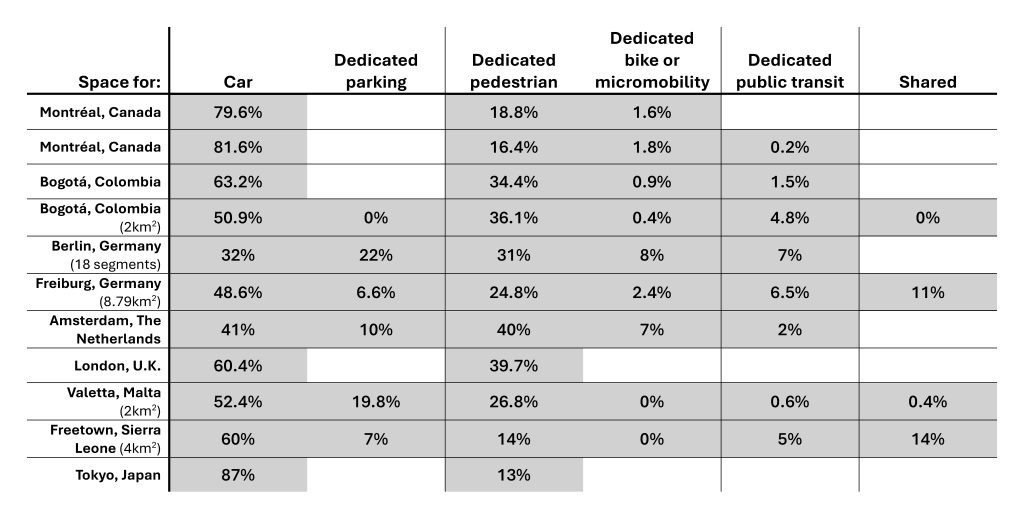Continuing his work on street space allocation, doctoral candidate Daniel Romm and co-authors Lexi Kinman, Kevin Manaugh, and Grant McKenzie, have published a new study in the International Journal of Sustainable Transportation. The article, Measuring and Moving on the Street: A Scoping Review of Street Space Allocation Studies, systematically reviews the 12 existing studies (as of spring 2025) on this important topic.
Since conducting the review, Romm et al.’s study of street space in Montreal has joined this exciting body of research. Street space allocation studies are cohering into a field of research that is well-positioned to study and make important contributions towards improving city streets and urban liveability.
The article:
- Finds all existing studies on this topic.
- Summarizes and synthesizes their methodologies, results, policy recommendations, and future research directions.
- Discusses conceptual framings, methodological developments and problems in the field, and makes suggestions for future research.
The following table summarizes the findings of existing studies in terms of street space allocation, adding the results of our own recent publication. Studies use different methodologies and consider different elements of the street. For each study, the grey shade indicates which features they measured.

The authors conclude:
“The included studies, taken together, make two key contributions: methodologically, in developing methods of measuring street space, so that the problem of unfair allocation is known and its contours defined; and conceptually, both in refocusing the analytical lens on the street, as the locus of contestation over mobility futures, and in discussing ethics, justice, and fairness in this context.”
The following directions for future research are presented:
- Developing standardized methodological approaches or toolkits for examining equitable street space allocation, or otherwise replicating existing methodologies to facilitate comparisons across studies.
- Conducting additional comparative studies, perhaps using existing methodologies.
- Investigating the policy transferability of findings through comparative studies.
- Developing measures of street space use beyond modal split, to have better tools to evaluate the equitable allocation of street space, perhaps including dynamic space consumption.
- Integrating additional street data and municipal targets into analyses, alongside existing analyses.
- Studying how street space allocation measures can better inform urban policies of street space allocation, and be used to improve public communication of reallocation projects.
We look forward to future research in this emerging field.

